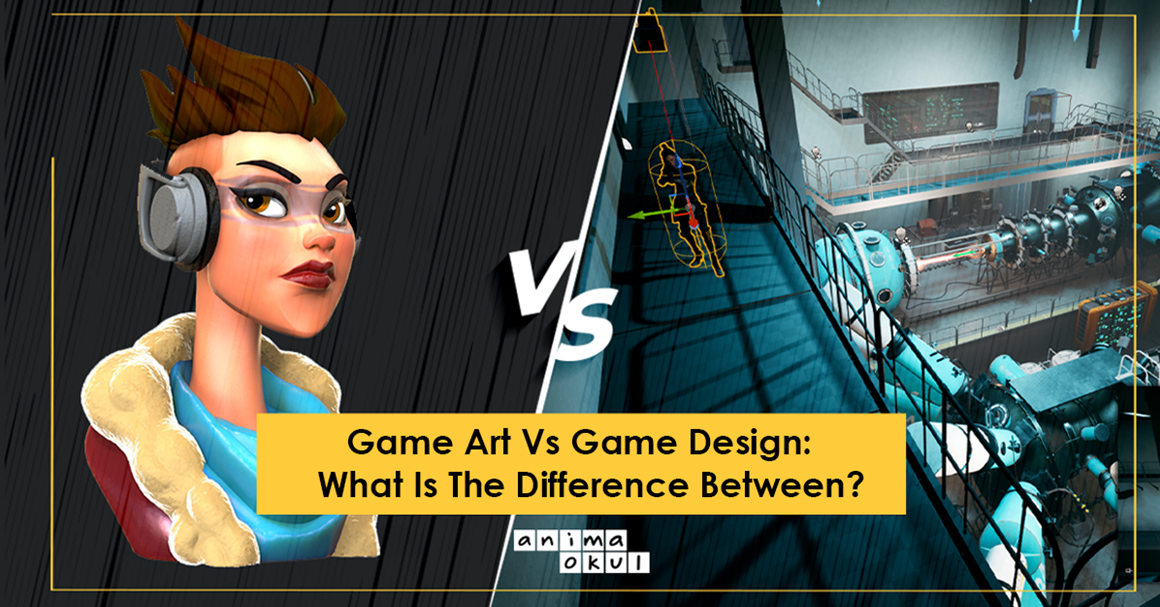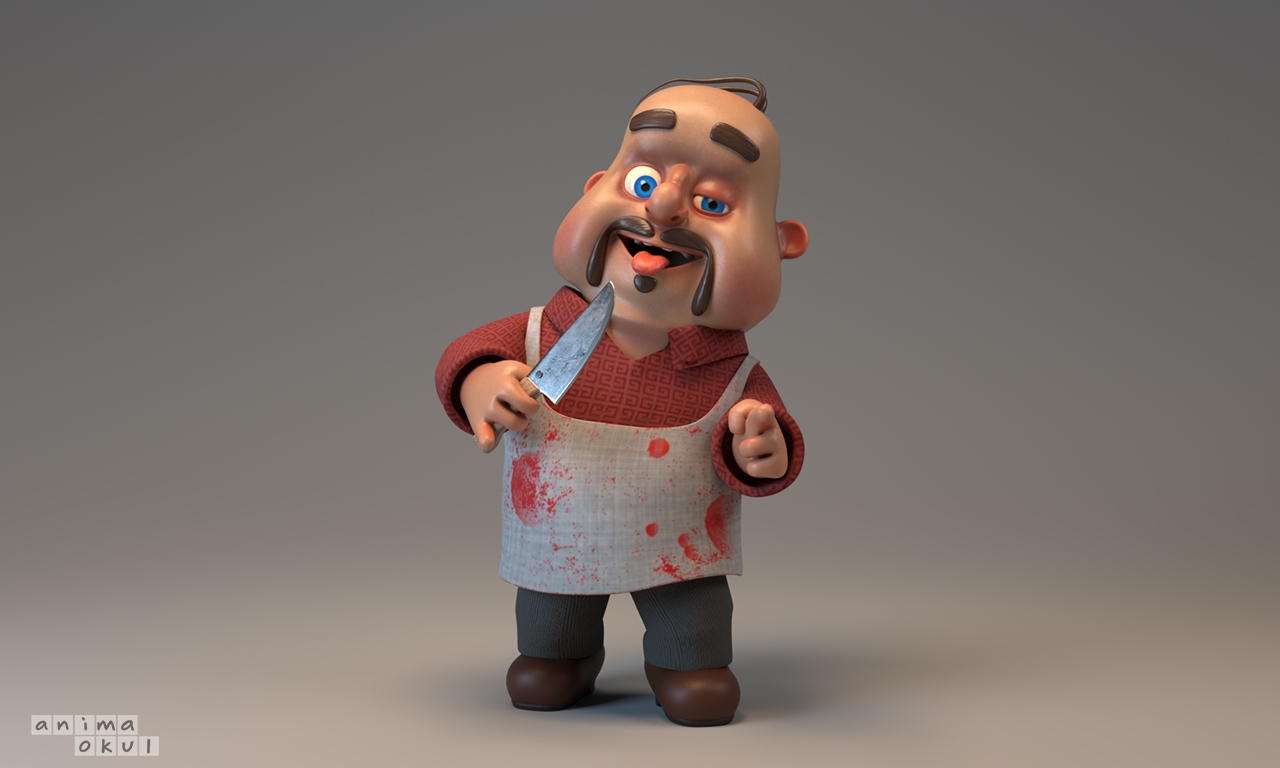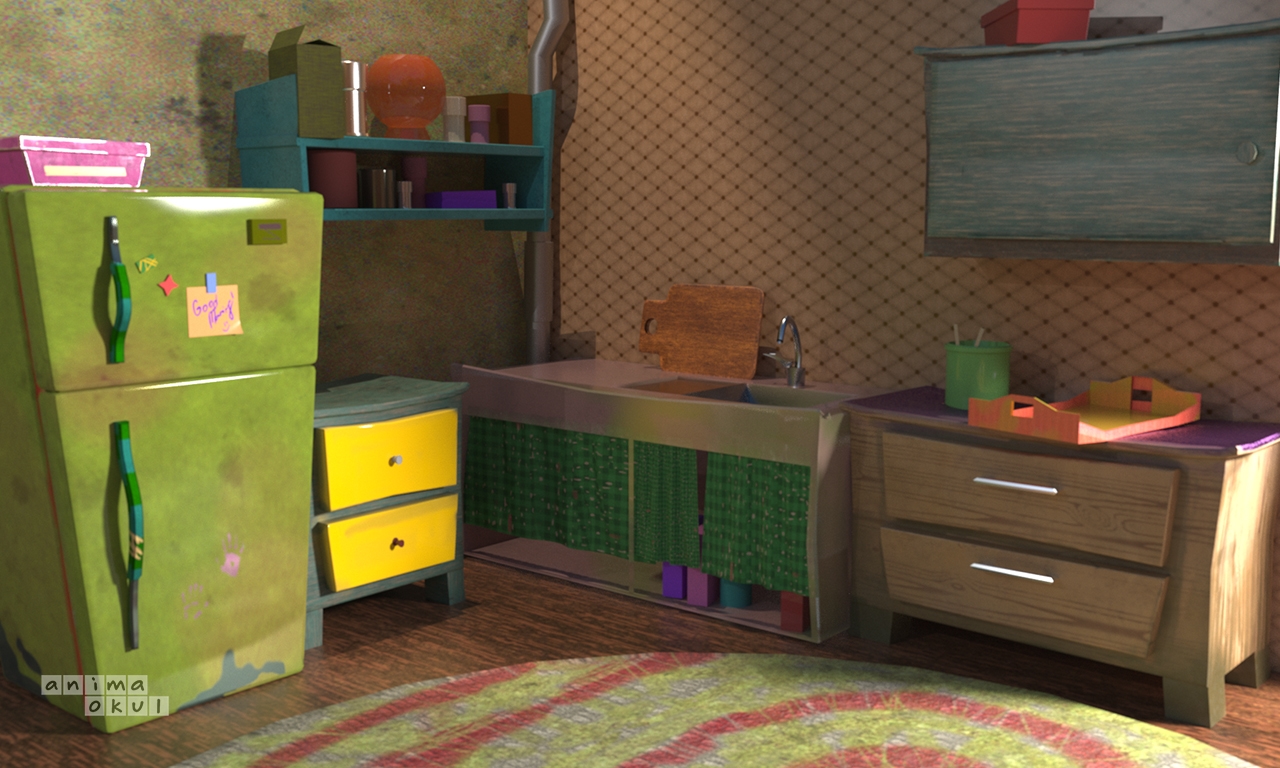GAME ART VS GAME DESIGN: WHAT IS THE DIFFERENCE BETWEEN?

Those who say I love video games and want to be a part of this world, come here! You can move to a new level in your life by signing up for Game Design and Game Artist trainings in our Anima School new education term. If you don't know which one to choose or if you don't know the differences, be sure to read the article we prepared for you to find out!
Basically, Game Design and Game Art are different roles with different knowledge and skills that affect a final product; the game. But at the same time, all teams must work together to create a good product.

What is Game Artist?
Game Art is a complex field that includes many subjects such as creativity, imagination, animation, attractiveness. Game artists are graphic artists who create the visual impact and content elements of the overall product, envisioning how the elements will look in each project. Modeling, character and environment designs, textures are the responsibilities of a Game Artist.
They use their artistic creativity to create sketches for preliminary designs of characters, environments and other assets. These sketches should fit the intended message, art style, and genre. They need to convert these sketches or concepts into 2D or 3D graphics. They often work under the direction of a lead artist. This is the most experienced specialist responsible for developing a specific artistic vision of the entire project.
They can also create artwork for product packaging, promotional materials, and websites. Some Game Artists specialize in human figures, character design, some in buildings and landscapes, and some in textures for 3D objects.
What is Game Design?
Game Design, on the other hand, is a multi-purpose field that includes content creation; down to visuals, rules and levels. The appearance of the game is one of the determining factors of its success, based on the gaming experiences of the target audience. A game designer may combine the functions of a manager, a narrator, a mathematician, depending on the expertise and needs of a particular studio or project. Understands the mechanics of a game, controls the creation process and timing.
The key role of a game designer is to find the rules by which the game will work and make them as interesting as possible. Their task is then to communicate all viable ideas to the rest of the team, preferably with the same picture in everyone's head.
Often the designers decide what the player can and cannot do, how the enemies will behave, what obstacles will be in their path, and what kind of ultimate experience users will get.
If you have come this far and still have question marks in your mind, then let's explain the subject with one of the oldest and most well-known games in history; with chess!

Game Design
Games always start with a concept or idea-inspired design. The aim of chess is to simulate war and control of lands. Chess was used as a lesson to teach young rulers how to adequately assess risk and reward when it comes to troop movements. These concepts are implemented and reinforced by the chess rules decided by the designer.
To visually test the prototype, the designer uses a game board of squares and two contrasting colors that will oppose to control the playing field. It describes each of the pieces by name and how that piece interacts, which explains how each piece moves across the board. The goal was to create a simple goal with hundreds of complex ways to reach the end of the game. This too was a mental representation of troop deployment tactics.
A designer's role is to help bring a sense of unity to the team by bridging the difference between Game Design and Game Art. That is, being able to harmonize organically with the arts and programming teams. But the designer may not have expertise in art or programming. A designer can understand both so that he or s/he can apply design principles as effectively as possible. S/he can communicate the game's design principles to artists or model a character so they know how to animate. The designer can communicate the game design principles to the programmer so that the programmer can create the basis (chessboard) and purpose of these characters (pieces). There is a great variety of design jobs, from custom (level design) to overseeing the entire area of the game (economy or monetization design).

Game Art
Now we have some pieces and a board idea with rules. But the physical representation of each piece and board is not yet available, we only have a prototype design. This is where Game Artist comes in.
The artist uses the game's design as a guide to create the look of the game. Using this information, it creates physical representations of each of the parts. The opposing sides must be different from each other, and each of the pieces on both sides must be easily distinguished from each other. The artist then takes the designer-created prototype, a game board that facilitates the defined movement of each part of the player, and visually brings the two opposing sides together to create a visually appealing package. For example, horses in chess represent cavalry knights riding on horseback, thus creating the appearance of the knight piece.
The artist is responsible for presenting a visually appealing product. Yet who decides what is visually appealing and does that mean the artist has total control? Not really. At the end of the day, the artist collaborates with designers and programmers, i.e. other departments. Incorporating art into play requires a line with its own tools, which naturally also requires its own type of design.

Game Programming
One of the most well-known business lines in the game industry is programming, where mathematical and practical applications are turned into a game. What happens when you add valuable mechanics in chess? What if we add Health or Stamina bars to each piece, or the damage done by each piece? It has a specific, detailed design concept specific to programming roles. The programmers are the engineers who create the materials and tools in the game, they determine the values of the effectiveness of each piece.
Simple and quick explanation of the difference between Game Design and Game Art: Game designers understand theory, game artists understand the aesthetics of the game. Together they can create a balanced and beautiful project that people will remember for years to come. To this day, chess is still played competitively and chess is thousands of years old with different versions coming from various cultures around the world.
You can improve yourself in Game Art and Game Design fields without any background knowledge and step into the game world. Don't forget that we have prepared you for the game world at Anima School too! After equipping yourself in the fields of Game Art or Game Design and creating your portfolio, you can also work in game companies or as a freelancer.
Source: MBN | AIE